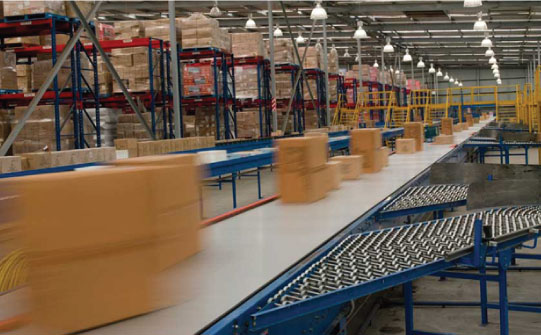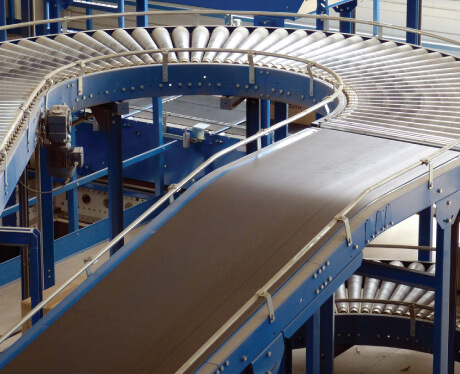The ideal overhead conveyor system for your facility is the one that makes the best possible use of space in your work areas, helping you increase productivity using work zones, right up the ceiling level.
Use this guide to help you identify the “must-have” features of your overhead conveyor.
Enclosed Track Conveyors
An enclosed track conveyor uses a track that closes completely around the trolley connector. Only a small gap is left to accommodate the connector that holds the trolley, hanging beneath the track. These designs are a little more sophisticated than open track configurations, and they may be more difficult to install. However, the inside of the track is protected from environmental wear and tear, and an enclosed track can incorporate bends and curves more easily where required.
Open Track Conveyors
An open track conveyor does not close around the trolley connector, and it has an ɪ-shaped cross-sectional profile similar to that of a steel girder. Installation tends to be easier and less costly than for an enclosed track conveyor. And, this type of designer may be more suitable for applications in which long, straight sections of track are necessary.
Synchronous Conveyors
If you are conveying a steady stream of items along your system, a synchronous conveyor ensures these items move in sync. In other words, items are evenly spaced along the system and move at the same rate. This is very useful on assembly lines, when the equipment needs to remain operational even at higher volumes. You will also be able to retain full control over the entire network from a centralized point.
Asynchronous Conveyors
If your conveying needs are a little more ad hoc – with different items being transferred through as and when required – an asynchronous system may be the better option. This type will not be running all the time and may not be powered at all – you will simply send items through whenever you need to.
NOTE: Some systems may be able to run both synchronously and asynchronously to reflect the needs of businesses. If you are interested in this type of conveyor, be sure to work with an expert team. Pricing can be an issue, and only an experienced provider can help you design a combo system within budget.
Powered Conveyors
A powered conveyor is simply an overhead conveyor that drives trolleys around the network. If you need trolleys to travel long distances or to travel up gradients, you will require a powered conveyor system. The main difference between power and free conveyor is that powered systems are more sophisticated and may be more expensive to install and to maintain.
Free Conveyors
Free conveyors do not apply any additional power to move trolleys around the system. They may use gravitational energy to move trolleys from A to B, but they do not have any additional power needs. As such, they are relatively simple to install, and they have fewer operating parts that may become damaged and need repairing or replacing. Many asynchronous systems utilize free conveyors.
Find the Ideal Overhead Conveyor System for Your Needs
You need a conveyor system that is up to the task – one that is heavy-duty enough to meet your business’s load capacity needs. The above equipment types are intended as a guide, and it is likely that your own needs will be a little more unique or specialized. For example, you may need a custom solution to operate in a small space, or you may require a conveyor built for the unique configurations of a packaging room.
Reach out to our team today and let us help you identify the perfect overhead conveyor system for your material handling system.


